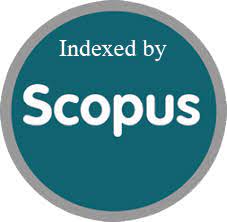Dixon Chemical Shift Magnetic Resonance Imaging for Differentiating Benign, Malignant, and Non-Neoplastic Bone Marrow Lesions
Keywords:
Bone Marrow, Benign, Malignant, Non-Neoplastic, Dixon Chemical Shift, Magnetic Resonance ImagingAbstract
Background: On magnetic resonance imaging (MRI), bone marrow (BM) lesions cause a localized or widespread change in signal strength or a heterogeneous signal pattern, which results in a steady water signal. Finding out how well Dixon chemical shift imaging distinguishes between benign neoplastic, malignant, and non-neoplastic BM lesions was the goal of this study.
Methods: For this prospective investigation, 40 individuals of both sexes with suspicious
bone tumors or indeterminate marrow lesions or altered BM signal intensity on T1 and T2 WI. The control group consisted of twenty participants. Every participant in the study underwent an MRI, including the Dixon method. The spine was the most often affected area by bone marrow lesions.
Results: The signal dropout % value in benign BM lesions was significantly higher (P<0.05) than in the malignant and control groups. The signal intensity ratio (SIR) of the benign group was significantly lower than that of the malignant and control groups. While signal dropout % sensitivity, specificity, PPV, and NPV were 91.67%, 60.0%, 73.3%, and 80.0%, respectively, SIR's sensitivity, specificity, PPV, and NPV were 91.67%, 75.0%, 84.6%, and 85.7% instead. The receiver operator characteristic for signal drop out percentage yielded an AUC of 0.977, while SIR's gave an AUC of 0.951.
Diagnosis accuracy of Dixon MRI in the studied patients was with sensitivity, specificity, PPV, NPV, and accuracy 87.50%, 75%, 84.0%, 80% and 82.50%, respectively.
Conclusions: With its quantitative indicators, Dixon MRI is a useful and quick tool for addressing problems. It has a great capacity to distinguish between benign and malignant BM lesions with high diagnostic accuracy, sensitivity, and specificity
Downloads
Metrics
References
Moulopoulos LA, Koutoulidis V. Bone marrow MRI. 2nd ed: Springer; 2015.
Vanel D, Casadei R, Alberghini M, Razgallah M, Busacca M, Albisinni U, editors. MR imaging of bone metastases and choice of sequence: spin echo, in-phase gradient echo, diffusion, and contrast medium. Seminars in musculoskeletal radiology; 2009: © Thieme Medical Publishers.
Wadhawan BS, Kaur R, Kaur V, Jirankali V, Singh N, Jindal R. The role of chemical shift magnetic resonance imaging in differentiating osteoporotic benign and malignant vertebral marrow lesions. ol J Radiol. 2021;86:468-558.
Akman B, Korkmaz HAA, Sari A. Efficacy of chemical shift MRI for differentiating diffuse red bone marrow reconversion and hematological malignancies. Turk J Med Sci. 2019;49:644-52.
Eriksen EF, Ringe JD. Bone marrow lesions: a universal bone response to injury? Rheumatol Int. 2012;32:575-84.
Van Vucht N, Santiago R, Lottmann B, Pressney I, Harder D, Sheikh A, et al. The Dixon technique for MRI of the bone marrow. Skelet Radiol. 2019;48:1861-74.
Omoumi P. The Dixon method in musculoskeletal MRI: from fat-sensitive to fat-specific imaging. Skelet Radiol. 2022;51:1365-9.
Wismer G, Rosen B, Buxton R, Stark D, Brady T. Chemical shift imaging of bone marrow: preliminary experience. AJR. 1985;145:1031-7.
Costa DN, Pedrosa I, McKenzie C, Reeder SB, Rofsky NM. Body MRI using ideal. AJR. 2008;190:1076-84.
Oki N, Ikebe Y, Koike H, Ideguchi R, Niino D, Uetani M. FDG-PET vs. chemical shift MR imaging in differentiating intertrabecular metastasis from hematopoietic bone marrow hyperplasia. JJR. 2021;39:1077-85.
Douis H, Davies A, Jeys L, Sian P. Chemical shift MRI can aid in the diagnosis of indeterminate skeletal lesions of the spine. Eur J Radiol. 2016;26:932-40.
Ragab Y, Emad Y, Gheita T, Mansour M, Abou-Zeid A, Ferrari S, et al. Differentiation of osteoporotic and neoplastic vertebral fractures by chemical shift {in-phase and out-of phase} MR imaging. Eur J Radiol. 2009;72:125-33.
Saifuddin A, Shafiq H, Malhotra K, Santiago R, Pressney I. Comparison of in-phase and opposed-phase T1W gradient echo and T2W fast spin echo dixon chemical shift imaging for the assessment of non-neoplastic, benign neoplastic and malignant marrow lesions. Skelet Radiol. 2021;50:1209-18.
Chiabai O, Van Nieuwenhove S, Vekemans M-C, Tombal B, Peeters F, Wuts J, et al. Whole-body MRI in oncology: can a single anatomic T2 Dixon sequence replace the combination of T1 and STIR sequences to detect skeletal metastasis and myeloma? Eur J Radiol. 2023;33:244-57.
Downloads
Published
How to Cite
Issue
Section
License

This work is licensed under a Creative Commons Attribution 4.0 International License.
You are free to:
- Share — copy and redistribute the material in any medium or format
- Adapt — remix, transform, and build upon the material for any purpose, even commercially.
Terms:
- Attribution — You must give appropriate credit, provide a link to the license, and indicate if changes were made. You may do so in any reasonable manner, but not in any way that suggests the licensor endorses you or your use.
- No additional restrictions — You may not apply legal terms or technological measures that legally restrict others from doing anything the license permits.






